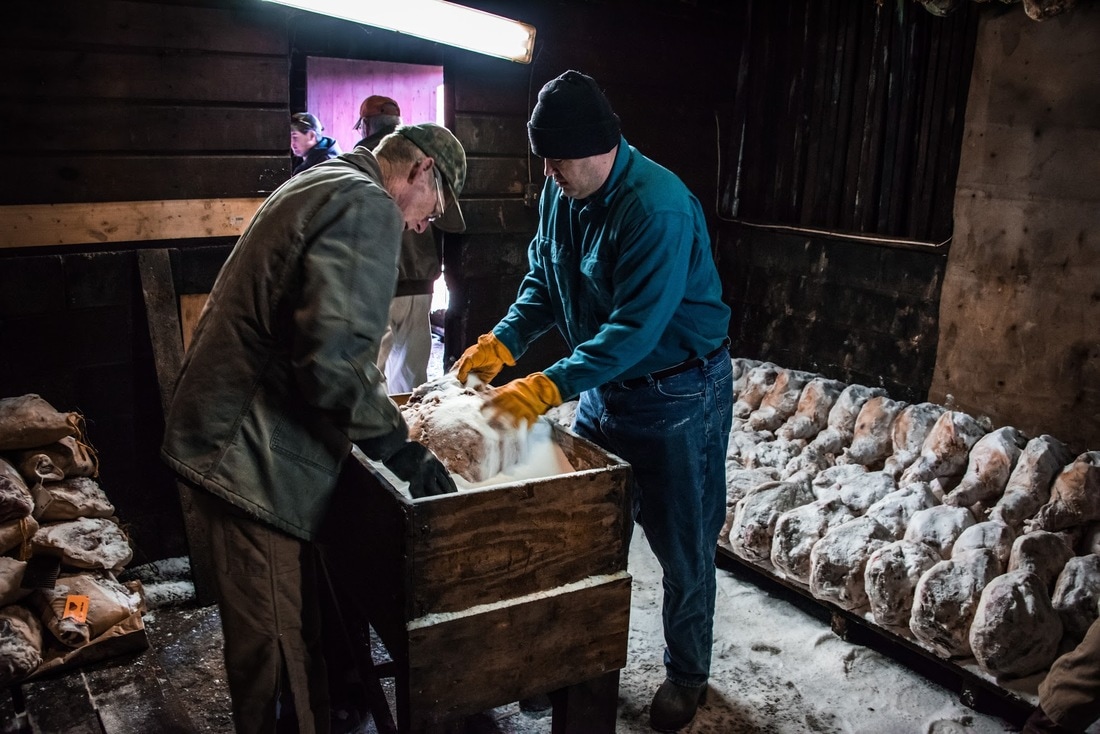The Virginia Pork industry along Virginia's
|
Ham Facts
|
The Curing & Smoking of a Virginia Country HamDarden’s Country Store and Smokehouse is run by Tommy and Dee Dee Darden and is also a 500-acre working farm hosting about a thousand visitors and school children each year. Below, the Dee Dee describes how they smoke and cure hams the same time-honored way that Tommy's parents and grandparents did.. (Source: DardensCountryStore.com)
The curing process begins in January when the hams are delivered, each weighing in at about 18-25 pounds. The hams are rolled in plain old table salt, rubbing and coating them until the entire ham is evenly covered. Salt draws the water from the ham and reduces the weight of the hams by approximately 20%. The Darden’s then get help from neighbors, friends and family to lay the hams carefully on pallets. The position of the ham on the pallet determines the shape. A perfect ham is shapely, not too round, not too flat. Country bacon comes from cured side meat. These pieces have twine attached for hanging after the seasoning. “Gotta get that twine just right to keep the ham from slipping from the rafters. The most labor intensive part of the ham business is the washing the hams and then pepper coating them. They’re scrubbed in hot water and all the salt is washed off. It's a messy operation. Side meat that is going to become bacon is covered in black pepper and then hung to age. After the salt is washed off, Tommy ties a loop of string to the end of the ham hock so that it can be hung from the rafters. The hams are then carefully hung in the rafters and allowed to cure for about 40 days and nights. Next, the hams are smoked with hickory and apple wood during the rainy days of April and May. After the smoking, the hams age to perfection. "We don't like to slice, sell or cook any hams until after July 4th." says Tommy. The Darden’s sell slices of ham thought out the year at their store, but hams can be reserved for the holidays. Click here for Dee Dee and Tommy’s instructions on how to cook a country ham. More information on the pork industry in Virginia can be found on the Virginia Pork Council website.
|






